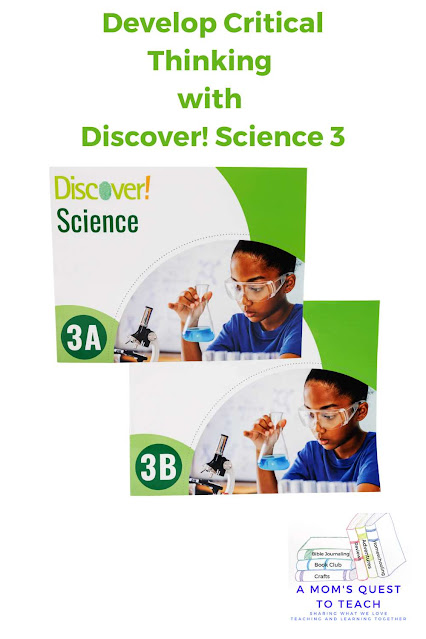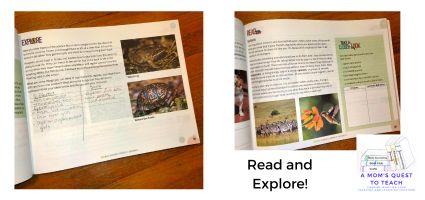I received a COMPLIMENTARY copy of this homeschool resource from Timberdoodle in exchange for my honest opinion. I was not required to write a positive review, nor was I compensated in any other way. This post contains affiliate links. Please see my Terms of Use and Disclosure Policy page for more information. Thank you.
Are you looking to study science in a new way in your homeschool for third grade? Discover! Science 3 is written to develop critical thinking through challenging questions and a variety of creative projects. It is written with homeschoolers in mind, so parents will find the teacher's guide helpful.
If you purchase this curriculum, you will receive three books: the two student texts (3a and 3b) and the teacher's guide (which is used for both texts). And while it is not faith-based, it doesn't appear to put down a Biblical worldview.
What Will Your Children Study in Discover! Science 3?
The first six chapters focus on an introduction to science, animals, plants, and how they interact (food webs, ecosystems, etc.). As your child continues, they will be studying matter, sound, energy, water, and more. Here are a few specific topics studied:
- Temperature of Cold-Blood Animals
- Explore Birds' Beaks
- Endangered Plants and Animals
- Plants as Energy
- Changing Matter
- Sound Waves
- Friction
- Minerals
- Weather Tools
- Digestive System
A Typical Day for Our Homeschool
My Thoughts
One of the things I particularly like about this science curriculum is that it is NOT heavy on experiments. While our daughter LOVES experiments, I find them tedious and challenging at times. If a curriculum does not include all the materials, it is just one more thing for me to purchase and prepare. Discover! Science 3 incorporates other projects that allow our daughter to go beyond the text, and we've included a few ourselves.
For example, we completed a reptile research notebooking project. It allowed me to use notebooking pages we already had so they could dig deeper into learning about three or four specific reptiles, including the Galapagos Tortoise, the chameleon, and the milk snake.
We also made a simple snake with pipe cleaners, noodles, and some construction paper. I love that this project had materials that we already had around the house and was simple to put together but had a high educational impact. We were able to discuss the way a snake's body moves, its skeleton, its organ placement, and how it smells.
Since this curriculum is dependent on reading and writing, there is quite a bit of writing. Sometimes, it almost feels like too much for our daughter. Hence, the reason why I sometimes write down the answers.
In a lot of ways, this curriculum also feels like it is written more for the classroom than a homeschool. The Instructor Guide definitely lends itself to being more of a classroom teacher guide than one for homeschool parents. I would have preferred to have had the student books reproduced but with answers and teaching instructions listed within it. I found myself having to open the student book and the instructor guide to line up objectives, information on supporting your student and learning styles, and extension activities. The instructor guide also has the assessment or chapter tests in it. So, you will need to either photocopy those pages or share the guide with your child.
While we are enjoying Discover! Science 3, I don't think it is quite the right fit for our family. I encourage you to check out Timberdoodle to read more about this science program for yourself.
Do You Want to Read More Timberdoole Reviews?
- Adding Writing Into Our Curriculum: A Review of Daily 6-Trait Writing Grade 3
- Dice, Decks, and Boards: Penguins Huddle Up™ Game
- Including Geography in Your Homeschool: A Review of Skill Sharpeners Geography - Grade 2
- Supplementing Fifth Grade with a Geography Workbook



.jpg)
No comments:
Post a Comment